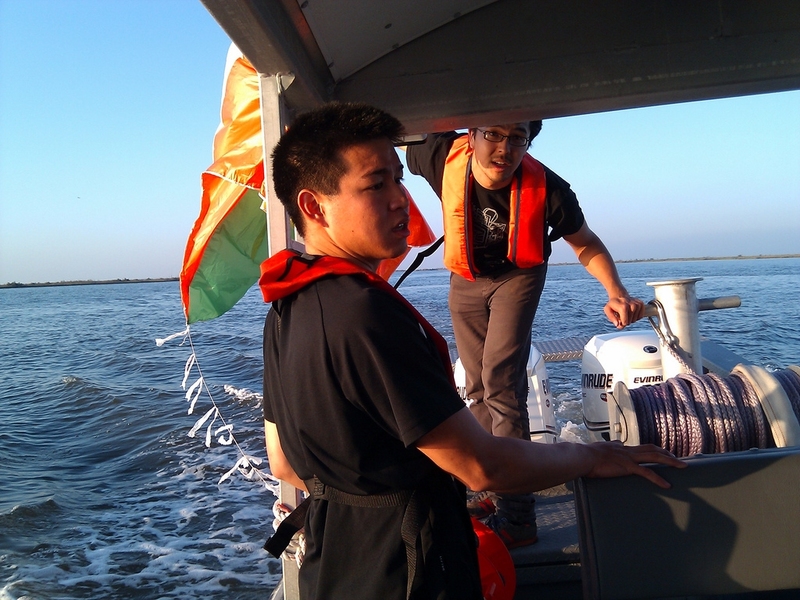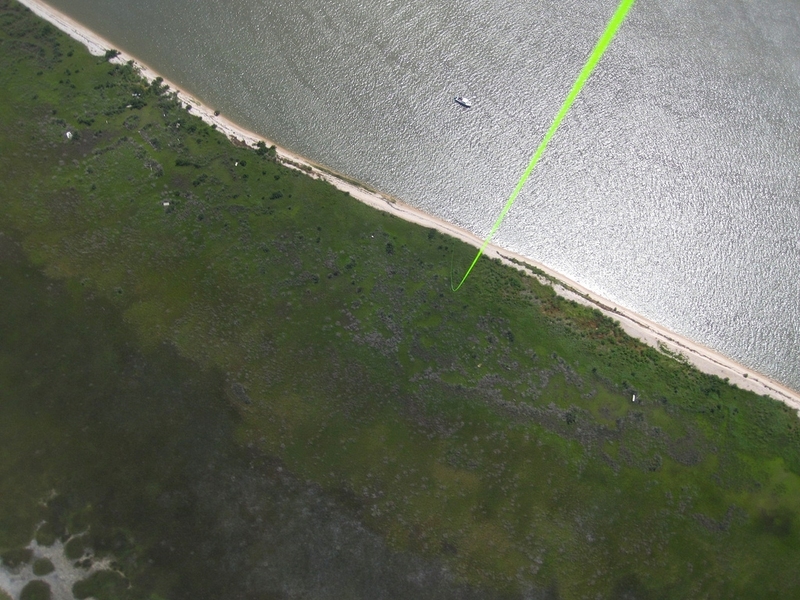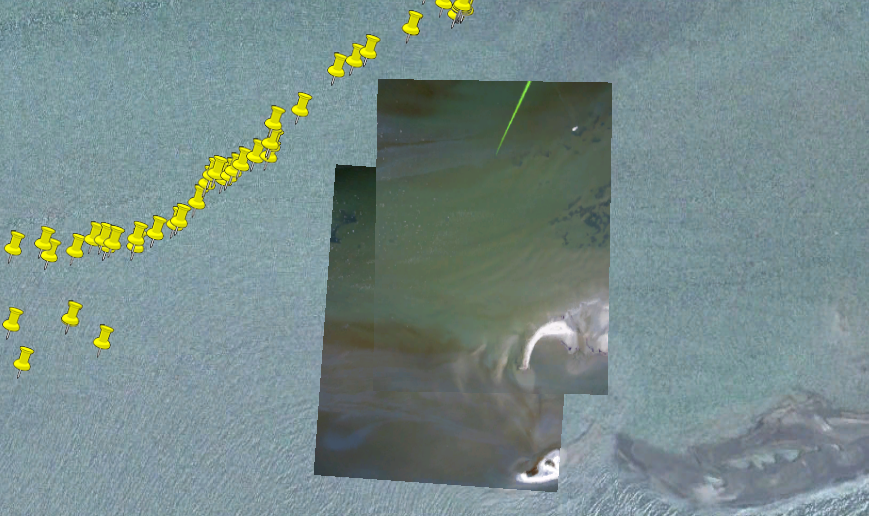While the world’s news media report on the expanding oil slick in the Gulf of Mexico, MIT Media Lab student Jeffrey Yoo Warren and his collaborators are providing their own useful coverage of the crisis.
Warren, Oliver Yeh ’10 and do-it-yourself cartographer Stewart Long have been using inexpensive cameras attached to ordinary helium-filled weather balloons, or even oversized trash bags, to capture aerial photos that are then stitched together and geometrically corrected using software Warren wrote (to compensate for camera angle and distortions) to make very accurate local maps. For example, last January Warren traveled to Peru to help citizens there meet a requirement to provide accurate maps of the lands they occupied in order to obtain the title to the lands — Warren’s mapping software enabled them to create those maps.
The team realized that in the Gulf oil spill, future lawsuits, as well as monitoring of environmental impacts from the spill, would depend on extensive, accurate documentation. So earlier this month, as crews tried unsuccessfully to contain the undersea oil leak, Warren and his colleagues took their technology to the Gulf Coast. Working with local groups such as the Louisiana Bucket Brigade, an organization in New Orleans that focuses on industrial pollution, they trained volunteers to make and deploy the low-cost photography systems. “Now, they’re the local leads on this, and we provide the training and technical support,” Warren says. The systems can be suspended from balloons or kites, and all the equipment needed for one monitoring system can be bought for less than $100.
For now, as long as the oil remains offshore, they are using the system to provide detailed imagery of the vulnerable coastal wetlands — essentially, the “before” pictures to be used for comparison with any future damage in the event the oil reaches those areas. They have also hitched rides on private planes to get out far enough to document parts of the spreading oil slick. Using GPS tagging and the software they developed to integrate the images, they hope to create an extensive set of documentation that can be used to monitor the spill’s effects, and all the images are being made accessible online for everyone.
“To use this in litigation, as well as environmental monitoring, you really need to have maps, not just imagery,” Warren explains. He hopes to return to the site next weekend to continue the project.
Shannon Dosemagen, a member of the Louisiana Bucket Brigade, says the mapping tool will be useful for local communities that find themselves confronting the crisis. “As the spill spreads gradually, being able to map plots of land over a stretch of time will be incredibly valuable to show how the oil is impacting the coastal environments and thus livelihoods of coastal populations.”
MIT student leads project using balloons and kites to provide aerial documentation of the Gulf oil slick’s extent and effects
Publication Date:

Caption:
Stewart Long (right) prepares to launch a balloon-mounted camera from the Chandeleur Islands in Louisiana.
Credits:
Photos courtesy of Jeffrey Warren and Stewart Long

Caption:
MIT graduate student Jeffrey Warren (right) prepares to launch a kite-borne camera from a boat in the Gulf of Mexico.
Credits:
Photos courtesy of Jeffrey Warren and Stewart Long

Caption:
Image of Louisiana coastline taken by digital camera suspended from a balloon. The green line is the tether holding the balloon, which was launched from the boat seen at top center.
Credits:
Photos courtesy of Jeffrey Warren and Stewart Long

Caption:
Balloon images of coastal wetlands areas such as this one in Louisiana could become useful for later estimates of environmental damage if the area becomes contaminated with oil.
Credits:
Photos courtesy of Jeffrey Warren and Stewart Long

Caption:
Orange bands of oil and tar can be seen washing up on the Chandeleur Islands.
Credits:
Photos courtesy of Jeffrey Warren and Stewart Long

Caption:
Using software developed by Jeffrey Warren, images can be stitched together and correctly oriented on a background image of the region. White areas are part of the Chandeleur Islands, and yellow push pins represent GPS readings taken for location reference.
Credits:
Photos courtesy of Jeffrey Warren and Stewart Long; background: Google Earth





